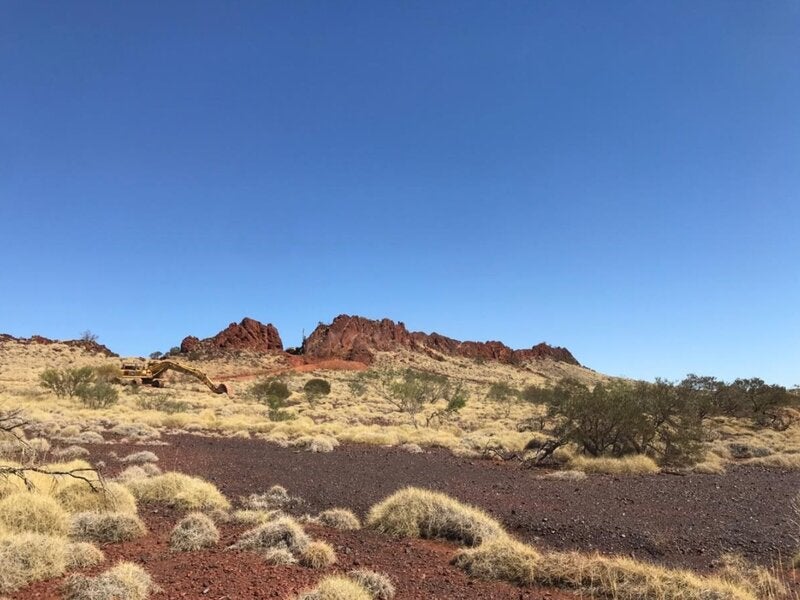The Paulsens East iron ore project is an open pit, direct-shipping ore (DSO) project being developed by Strike Resources in the Pilbara region of Western Australia.
The Department of Mines, Industry, Regulation and Safety (DMIRS) of the Government of Western Australia approved the project management plan (PMP) in April 2021, while the mining lease was granted for an initial term of 21 years in September 2020.
A feasibility study (FS) for the project was completed in October 2020 and the production of the first ore is expected by the third quarter of 2021.
The Paulsens East iron ore project is estimated to produce approximately 1.5 million tonnes (Mt) of iron ore a year over an initial mine life of four years.
Location, geology, and mineralisation
The Paulsens East iron ore project is located in the Pilbara region of Western Australia, approximately 10km away from the Paulsens gold mine.
The project comprises the mining lease M47/1583 that lies approximately 200km west of the Paraburdoo town and approximately 600km by road from Utah Point at the Port of Hedland. The Onslow Port is also situated approximately 233km away from the project site.
The mining tenement for the project hosts sediment of the middle Proterozoic Wyloo Group containing hematite mineralisation. The Wyloo Group rocks span from the continental Beasley River Quartzite to red beds of the Mt McGrath Formation covered by shallow marine Duck Creek Dolomite.
The iron mineralisation occurs as a hematite deposit in the Mt McGrath Formation forming an arcuate ridge up to 60m high and 3km long.
Iron ore reserves at Paulsens East
The Paulsens East iron ore project is estimated to hold 6.2Mt of probable ore reserves containing 59.9% iron (Fe), 7.43% silicon dioxide (SiO2), 3.77% aluminium oxide (Al2O3), and 0.086% phosphorous (P) at a cut-off grade of 58% Fe.
The indicated ore resources are estimated to be 9.6Mt containing 61.1% Fe, 6.0% SiO2, 3.6% Al2O3, and 0.08% P, at a cut-off grade of 55% Fe.
Mining method and ore processing
The open-cut mining method will be employed for ore extraction at the project. The extracted ore will undergo primary and secondary crushing at the site. The crushed ore from the secondary crusher will be offloaded to a screen for segregation of lump and fine products.
The crushing and screening plant will comprise of a jaw crusher, a cone crusher, double deck vibrating screens, connecting conveyors, and a telescopic stacking conveyor.
The final product will be trucked to the Utah Point multi-user bulk handling facility at Port Hedland. The processed ore will be stockpiled before being directly loaded into the ocean-going vessels (OGVs) for export.
Strike Resources is planning to produce up to 6Mt of iron ore from the initial four years of operations of the Paulsens East project.
Infrastructure facilities
The other infrastructure facilities for the Paulsens East iron ore project will include haul road access to the Nanutarra Road, an on-site laboratory, a mining village, a mining operation centre (MOC), fuel supply system, as well as water bores, storage, and distribution systems.
The project also involves the construction of a microwave tower with associated voice and data equipment as part of the communication infrastructure.
Contractors involved
Lucas Total Contract Solutions was selected for the mining, crushing, and screening services of the project in June 2021. The contract scope also includes the construction of an 18km haulage road and mining village site works.
Strike Resources also selected Dynamic Drill and Blast (DDB) to deliver drill and blast services, and Telstra for the development of the communications infrastructure at the mine site in June 2021.
Engineering consultancy firm Engenium was engaged to carry out the feasibility study for the project in June 2020.
ALS Metallurgy Iron Ore Technical Centre (ALS IOTC) provided metallurgical tests for the samples of the mining project.
Campbell Transport received an order to provide 13 ultra-quad road trains, including 13 prime movers and 52 trailers in May 2021. It followed the signing of a memorandum of understanding (MoU) between Strike Resources and Campbell Transport for the haulage services in April 2020.
Mining Focus Consultants was engaged in mine planning during the scoping study of the project which was completed in November 2019.





